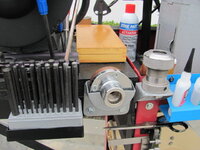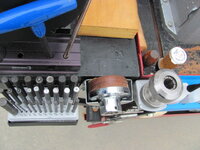aprayinbear
Member
Noobie question....
I have a standard 7mm barrel trimmer. Do I need larger cutting shafts (for larger holes) if I am using a dedicated chuck to hold the barrel and a drill chuck in the tailstock to hold the trimmer? Seems like the lathe should line up the barrel and cutter just fine.
I know about making sleeves, but if I can do without, all the better.
Happy Turning!:bulgy-eyes:
I have a standard 7mm barrel trimmer. Do I need larger cutting shafts (for larger holes) if I am using a dedicated chuck to hold the barrel and a drill chuck in the tailstock to hold the trimmer? Seems like the lathe should line up the barrel and cutter just fine.
I know about making sleeves, but if I can do without, all the better.
Happy Turning!:bulgy-eyes:




